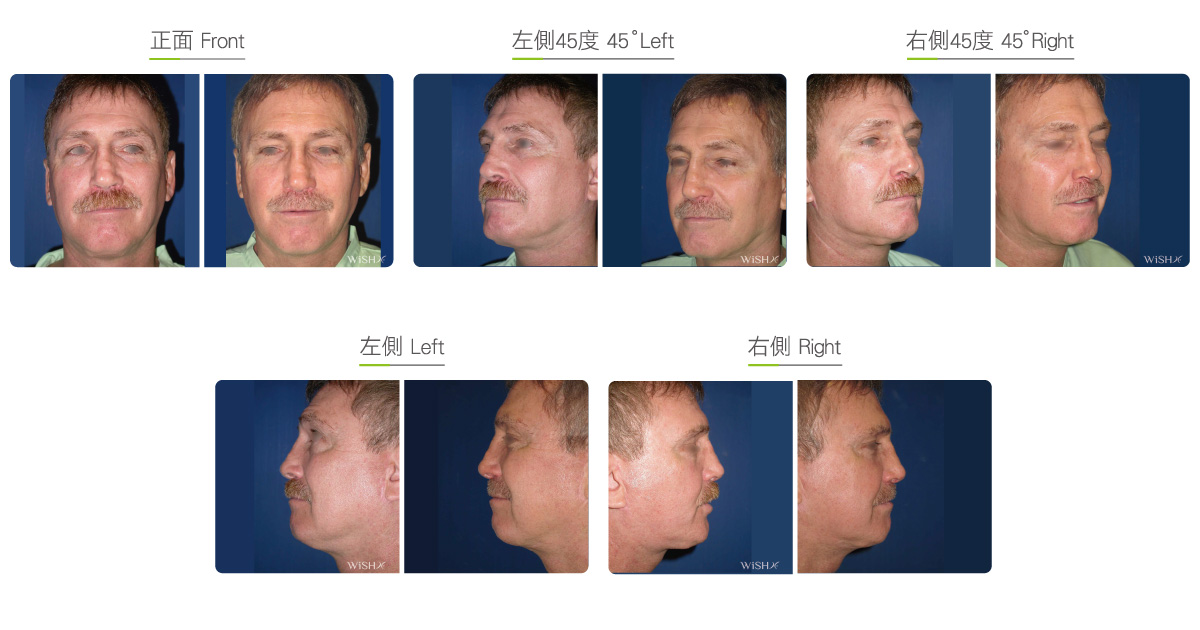Chin Lift
Chin skin may become loose due to aging, obesity, bone reduction, liquid silicone injection, or skin elasticity loss and thinning. Mild cases may result in a round chin that loses its original angle, whereas severe cases may cause the point of the chin to droop and taper down, making it look like a typical long witch’s chin from a lateral perspective. Moreover, patients cannot jerk the chin point when speaking or smiling, showing bilayer skin and other unnatural lines. A local chin lift may be considered to improve the above conditions.
This surgery is a regional lift and is performed by directly making an incision of approximately 3–5 cm at the turning point of the skin at the bottom of the chin. Via the incision, the skin peripheral to the chin and subcutaneous fascial layer are separated. Patients with severe sagging may require suspension suturing at the deeper muscular layer to elevate the chin angle to the normal position. Injection fillers or liquid silicone gel, if any, should also be taken out at the same time to lower the load of the chin skin. Finally, loose skin is excised and the wound is closed. This surgery may also be performed in combination with neck lift to shrink the jaw area via neck skin centralized suturing, which will achieve a better V-shaped face effect.
Surgical conditions
Duration
- Type of anesthesia: IV sedation + local anesthesia
- Type of incision: An incision of approximately 3–5 cm at the bottom skin of the chin
- Recovery: 3–5 days
- Removal of sutures: 7–10 days
General instructions
No food and water on the day of surgery
Anticoagulants, if any, should be suspended for 1 week.
- Rubbing or pressing of the chin should be avoided for 1 month postoperatively.
- Smoking, alcohol consumption, or irritating food should be avoided for 1 month postoperatively.
- Scar care should be continued for 3 months postoperatively.
Ideal candidates
- Individuals with aging chin laxity or sagging.
- Individuals with excessive skin laxity due to chin reduction or orthognathic surgery.
- Individuals with irreversible skin looseness due to removal of a chin implant.
- Individuals with chin deformity or sagging due to prior injection of liquid silicone gel or other fillers.
- Individuals with chin skin fat loss from obesity or sudden weight loss.
Potential complications
- Scar hypertrophy
- Temporary chin numbness
- Limited chin movement (temporary)
- Incomplete correction
Surgical advantages
-
The surgical area is confined to the chin, with no risk of nerve injury.
-
Able to be combined with chin implant placement or neck muscle suspension to remodel the chin angle.
-
Able to reduce the chin volume and sculpt a V-shaped chin.
-
The surgical results are stable and recovery is fast.
Surgical drawbacks
-
Scars at the bottom of the chin are visible upon raising the head.
-
The duration of the surgical effects may vary due to the individual’s skin elasticity.
-
Poor results for patients with thick skin or bony hypertrophy of the chin.

